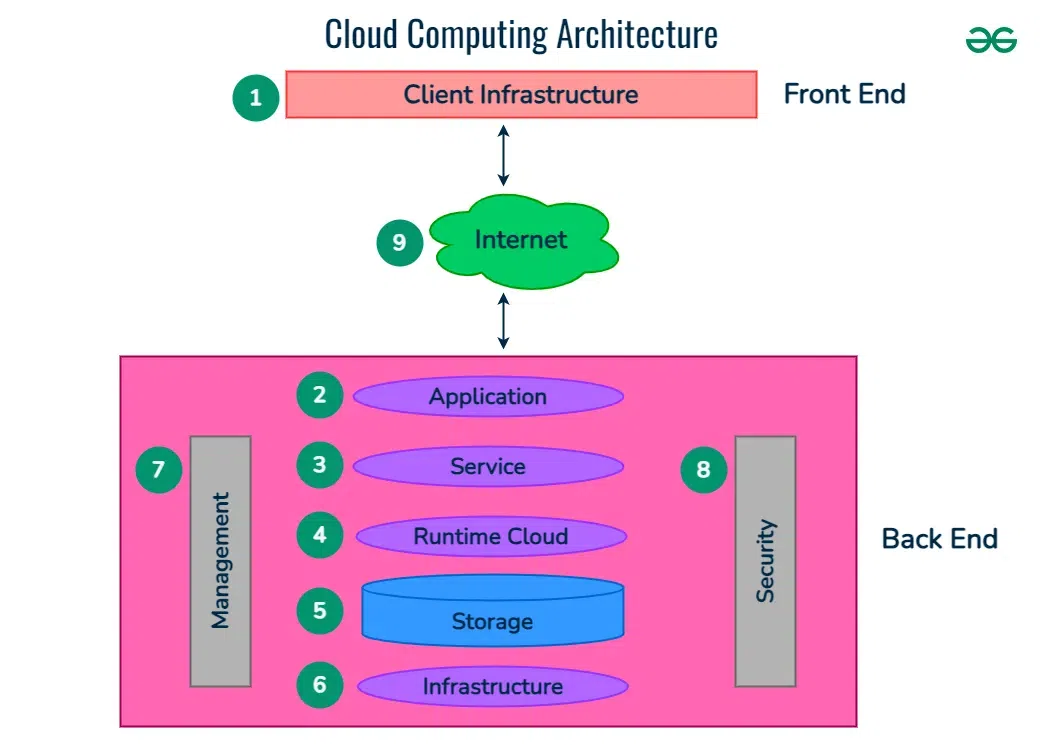Cloud Services - Transform Your Digital Infrastructure
Cloud Services - Transform Your Digital Infrastructure
Blog Article
Optimize ROI With Strategic Cloud Provider
In the fast-evolving landscape of service modern technology, the calculated use of cloud services has come to be a paramount factor to consider for companies aiming to improve their roi. By straightening cloud services with particular company purposes and utilizing a thorough approach to resource administration, firms can unlock a wide variety of advantages that expand beyond plain price savings. The elaborate interplay between expense optimization, scalability solutions, and rigorous protection steps in the world of cloud computing holds the essential to not simply making it through but growing in today's open market.
Benefits of Cloud Providers for ROI
Leveraging cloud services can considerably enhance return on financial investment by enhancing operational effectiveness and minimizing infrastructure costs. One essential benefit of cloud services is the scalability they supply. Services can conveniently scale their resources up or down based on demand, enabling for cost savings by only paying for what is used. This flexibility makes certain that business do not need to purchase costly on-premises hardware that may continue to be underutilized.
In addition, cloud solutions supply enhanced versatility and dexterity. With the capacity to gain access to data and applications from anywhere with a net link, staff members can work more effectively and team up perfectly. This flexibility also allows businesses to rapidly adapt to changing market problems, providing them an one-upmanship.
In addition, cloud services enhance protection measures, helping to secure delicate data and reduce risks. Cloud providers commonly have robust safety and security procedures and frequently upgrade their systems to resist cyber risks. By leveraging these solutions, services can decrease the probability of expensive information breaches and downtime, inevitably causing a greater roi.
Price Optimization Approaches
Exactly how can services efficiently minimize costs while optimizing the benefits of cloud solutions? Cost optimization approaches play a vital duty in accomplishing this equilibrium. One reliable strategy is to constantly keep an eye on and readjust cloud resource allowance based on real use. By rightsizing services to match needs, business can avoid overprovisioning and unnecessary costs. Furthermore, leveraging area circumstances or booked ability can bring about substantial cost savings, specifically for workloads with foreseeable use patterns.
An additional price optimization approach involves maximizing data storage by archiving or erasing repetitive info. Carrying out information lifecycle management plans helps in taking care of data successfully, lowering storage space costs, and boosting general system efficiency. In addition, using serverless innovations can assist in more price decrease by charging just for real usage instead of provisioning and keeping specialized web servers.

Scalability and Versatility Solutions
For services seeking to enhance their operational performance and responsiveness to altering needs, carrying out versatile and scalable cloud options is paramount. Scalability and adaptability in cloud solutions enable organizations to change their resources according to fluctuating work, ensuring optimum performance without unnecessary expenses. By leveraging cloud scalability, services can perfectly boost or decrease their computing power, storage, and data transfer as required, allowing them to fulfill peak needs without overprovisioning sources during slower durations.
Moreover, flexibility in cloud solutions enables companies to adjust rapidly to market changes and technological developments. With the capability to quickly incorporate brand-new tools and services into their existing cloud framework, organizations can stay dexterous and competitive in today's busy organization setting. Whether it's releasing brand-new applications, broadening into brand-new markets, or suiting remote workforces, adaptable cloud options provide the dexterity and flexibility required for sustained development and success.

Safety Steps for Information Defense
Implementing robust protection procedures is necessary for securing delicate data and guaranteeing data security in cloud environments. When using cloud services, companies have to focus on security to mitigate dangers connected with data breaches and unauthorized accessibility.
Multi-factor authentication (MFA) is another crucial safety action that includes an added layer of protection by requiring individuals to give multiple kinds of confirmation prior to accessing delicate info. This assists protect against unauthorized gain access to, even if login credentials are jeopardized.
Routine safety and security audits and monitoring are essential components of keeping data safety in the cloud. By carrying out routine evaluations and keeping helpful site track of for any suspicious activities, companies can without delay recognize and resolve possible safety and security dangers before they rise.
Additionally, applying role-based gain access to control (RBAC) guarantees that only accredited employees can access certain information sets, minimizing the threat of information leaks or unapproved adjustments (cloud services press release). By integrating these safety gauges right into their cloud technique, organizations can enhance data security and minimize protection vulnerabilities
Making Best Use Of Operational Performance
To enhance functional efficiency in cloud atmospheres, strategic resource appropriation is critical for enhancing processes and improving total productivity. By leveraging cloud services successfully, organizations can scale resources up or down based on need, reducing operational expenses and maximizing effectiveness. Automating regular jobs, such as software updates or data backups, through cloud administration devices can liberate IT groups to concentrate on more tactical efforts. Applying monitoring and analytics tools within the cloud facilities permits real-time presence right into efficiency metrics, enabling proactive identification and resolution of prospective concerns prior to they influence procedures. Additionally, adopting a cloud-native method to application advancement and release can better maximize functional performance by raising agility and reducing time to market for new services. Working together very closely with cloud company to line up sources with service purposes and routinely reviewing Look At This and optimizing cloud use can make certain that functional effectiveness stays a top priority for sustained success in the cloud environment.
Conclusion
In verdict, leveraging strategic cloud solutions can considerably boost operational performance and reduce facilities prices, ultimately making best use of roi for companies. By implementing cost-saving methods, maximizing see here data storage space, and making certain data security via security procedures, organizations can achieve scalability, versatility, and boosted efficiency in the cloud environment. Taking full advantage of ROI with cloud solutions requires constant surveillance, optimization, and automation to adjust to changing workloads and guarantee continual development and success.
In addition, cloud services enhance safety and security procedures, helping to safeguard sensitive information and mitigate dangers (Cloud Services).Carrying out durable security steps is necessary for guarding delicate information and making certain data security in cloud settings. When making use of cloud services, companies must focus on security to mitigate dangers connected with data breaches and unauthorized gain access to. Teaming up very closely with cloud solution companies to straighten resources with service objectives and on a regular basis evaluating and optimizing cloud use can guarantee that operational effectiveness continues to be a top concern for continual success in the cloud setting
By implementing cost-saving methods, maximizing data storage space, and ensuring information defense with safety and security steps, organizations can attain scalability, flexibility, and improved performance in the cloud setting.
Report this page